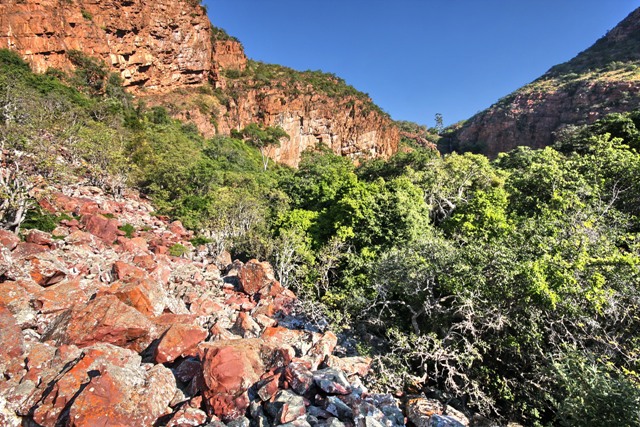
Experience the scenic beauty of the Soutpansberg Mountains, one of the oldest mountain ranges in Africa
The extremely hard reddish brown quartzite rocks, cliffs of which dominate the landscape of Morning Sun Nature Reserve, were deposited about 1 800 million years ago in the form of sandstone and bands of conglomerate which underwent intense metamorphism. The red colour is formed by iron oxide. This is evidence of the earliest known occurrence of oxygen in the earth's atmosphere caused by the evolution of plant life capable of photosynthesis.
In places the quartzite is interrupted by several intrusions, mainly of dolerite (diabase), the weathering of which gave rise to localised rich clay soils.
The Soutpansberg Mountains were formed by successive ESE-WSW faulting, which began 2 700 million years ago by the seismic action of the Limpopo mobile belt. Much more recent block-faulting, less than 150 million years ago caused the strata to dip to the north and rise in the south, forming the main cliff lines which are south-facing, with northern sides dipping at about 45.
The Soutpansberg strata became overlain by mostly softer Karoo sediments which became eroded away, in part by rivers flowing in a northerly direction. When these rivers wore down to the hard Soutpansberg strata, they continued along their original paths, giving rise to gorges traversing the E-W-striking hard quartzite ridges. The Sand River to the west and Wyllie's Poort to the north-east of Morning Sun Nature Reserve are examples of this phenomenon, likewise the southern arm of the stream feeding the big waterfall and from there leading via Mashovhela rock pool towards Wyllie's Poort.
Louis Trichardt Accommodation | Polokwane accommodation | Soutpansberg | Venda Culture
|
